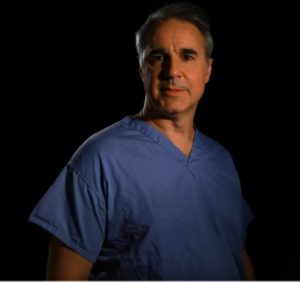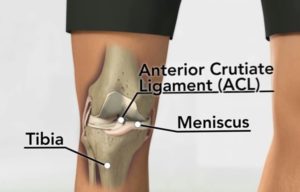Best Melbourne Knee Surgeon
How to Find a good orthopaedic specialist in Melbourne VIC
You don’t have to use the knee specialist or orthopaedic surgeon your local doctor recommends. This website will help you find the best knee specialist in your area. If you want to be operated by the best knee surgeon in Melbourne, you have a lot of choices for knee surgery. This site will help you find the top knee surgeon in the Melbourne 3000 area. You also have doctors in Melbourne CBD, Port Melbourne, Carlton, Flemmington. South Melbourne, and St Kilda.
Make an appointment with the surgeon recommended here, and find out your surgical options, and the skill level of your knee specialist.
Do you need Knee Surgery?
Two Top Rated Surgeons in Melbourne
Orthopedic Surgeon
170 Gipps St, East Melbourne VIC 3002, Australia
Ph: +61 3 9928 6969
Orthopedic Surgeon
Ground Floor/166 Gipps St, East Melbourne VIC 3002 Australia
ph:(03) 9928 6162
Orthopedic Surgeon
7 Studley Ave, Kew VIC 3101, Australia
Ph: +61 3 9853 5981
Knees injuries are a common complaint, especially in people who are active with athletics and pivoting-style sports. Meniscal tears are also common in various workers due to repetitive twisting and loading. Meniscus injuries can also affect individuals from simply arising from a bent position. Occasionally, meniscal tears or articular cartilage injuries occur along with other knee injuries, such as medial collateral ligament tears (MCL) and anterior crucial ligament tears (ACL). Fortunately, a knee surgeon can help treat and manage your knee injury.
Knee Replacement
The Knee tends to get severely damaged due to various factors. The damage to the knee can be due to Osteoporosis, arthritis or simply due to an injury to the knee, which can prevent you from performing simple day to day activities like walking or climbing the stairs. Your body may experience severe pain even while sitting down. The initial line of treatment involves medications and use of supports while walking, but this will solve the problem temporarily and is not a long-lasting solution to your anguish. Patients suffering from severe and progressive pain of the knee, which affects their daily activities, are the correct candidates for a knee replacement.
Once the patient is under anesthesia, an 8-inch to 1-inch incision is made in the front of the knee and the damaged portion is completely removed from the affected joints and then they are shaped to fit in an artificial joint usually made of metal or plastic. The surgeon removes the damaged cartilage and bone from the shin, thighbone and kneecap and replaces it with an artificial joint. A special material or cement is used to fit the artificial joint to the thigh bone, shin and the knee cap. With advancement in medical technology the artificial knees come in many different varieties that are designed to suit your lifestyle, weight, age and height. After the surgery, the new knee works efficiently as your healthy knee. The artificial materials used in the knee replacement surgery are known as prosthesis.
Initially you will have to walk with the help of crutches or supports. With proper care the patient can perform routine activities within six weeks of surgery, though post-operative care is extremely essential for speedy recovery.
Knee Reconstruction
The ACL or anterior cruciate ligament is an important ligament that helps in stabilizing your knee. This crucial ligament is essential while turning at high speeds especially while playing and running. People who indulge in sporting activities like football are susceptible to injure this particular ligament. The ACL is more prone to injury leading to swelling or severe pain of the knee joints. Though, the swelling may subside after a few weeks, but there is always a chance of aggravating the injury while running. If you are into sports and want to get rid of the pain and swelling completely, then you will have to undergo a knee reconstruction surgery. Under the knee reconstruction surgery the injured ligament is replaced by a new ligament, which typically comes from the hamstring tendons or the knee cap tendon. The muscle behind the knee is called as hamstring. The tissue or ligament taken from your body is called autograft.
The knee reconstruction procedure is generally done with an arthroscope. In this procedure a tiny camera is inserted through an incision made into the knee. The camera is connected to a monitor in the room, which helps the surgeon to perform the procedure. With an arthroscope the surgeon will have a detailed understanding of the ligaments and tissues in your knee. The affected ligament is then removed and a new healthy ligament is grafted by the surgeon. Small tunnels are made on the bone where the new ligament is attached with the help of screws to hold them in the correct place. As it heals the tunnels also fill, holding the ligament in its place.
The patient can even view the pictures of the procedure. The whole procedure will take around an hour and the recovery time will range from 3 months to up to a year. Walking and cycling can be done after three weeks of surgery after following the correct post-operative care, while contact sports will need 12 months recovery period.
Knee Arthroscopy
Knee arthroscopy is a procedure where in a surgery can be performed on a knee using a camera. Under this procedure the surgeon can have a clear view of the insides of the knee, which can help them diagnose and treat the knee problem. With the help of high resolution HD cameras or arthroscope and monitors, surgeons have been successfully able to treat complex knee related problems effectively. A very small incision is made on the knee joint and a sterile liquid is put to have a nice view of the knee. The orthopedic surgeon then inserts the arthroscope, which sends an image to a monitor where he can clearly see the structures within the knee in detail. This advanced procedure can help the surgeon fix the damaged tissue with small surgical instruments. Knee arthroscopy is done on an out-patient basis and the recovery time is much faster compared to the open knee surgery. The patient can completely recover within three weeks depending on the post-operative care and medications.
Regular exercise for several weeks after any type of surgery will help strengthen the muscles around the knee and joints. Therapeutic Exercise plays a very crucial role in the speedy recovery and has a positive impact on your health.
Find a Knee Surgeon near you
Best Knee Surgeon in St Kilda
Best Knee Surgeon in Malvern
Best Knee Surgeon in Yarra
Best Knee Surgeon in Richmond
Best Knee Surgeon in Bayside
Best Knee Surgeon in Brighton
Best Knee Surgeon in Boroondara
Best Knee Surgeon in Camberwell
Best Knee Surgeon in Hawthorn
Best Knee Surgeon in Kew
Best Knee Surgeon in Sunshine
Best Knee Surgeon in Brimbank
Best Knee Surgeon in Stonningham
Best Knee Surgeon in Prahran
Best Knee Surgeon in Frankston
Best Knee Surgeon in Kingston
Best Knee Surgeon in Hume
Best Knee Surgeon in Craigieburn
Best Knee Surgeon in Sunbury
Best Knee Surgeon in Melton
Best Knee Surgeon in Monash
Best Knee Surgeon in Essendon
Best Knee Surgeon in Moonee Valley
Best Knee Surgeon in Footscray
Best Knee Surgeon in Cranbourne
Best Knee Surgeon in Narre Warre
MCL Repair
MCL tears usually occur from sporting activities, such as soccer, football and skiing and entail the knee getting bent to one side, thereby tearing the ligament that is found inside the knee tissue. Sometimes, MCL injuries result in persistent instability and in such cases, a knee surgeon will rebuild the MCL usually using a donor tissue or an allograft to boost the suture repair of the knee ligament.
Meniscal Tears and Repair
The aim of the surgical procedure is to protect your meniscus as much as possible. Over time, knee surgeons have developed a variety of techniques geared towards treating and managing meniscus tears, including meniscus repair that aims at increasing the supply of blood to the damaged tissue to ensure a large area is repaired. Meniscus tears are often treated by getting rid of the unstable area whilst repairing the other areas, usually by suturing the knee cartilage and adding stem cells, clot materials and growth factors to speed up the healing process.
Usually, the patient can return home the same day after undergoing a meniscus repair.
Main Surgeon Locations
ACL Reconstruction
An ACL rupture is often caused by a twisting force to the knee. The most common activities that can cause this type of knee injury are soccer, football and skiing. Other parts of the knee can also be injured at the same time.
ACL reconstruction is usually carried out under general anesthesia. The procedure often takes between one hour and one and half hours. The knee surgeon usually makes small incisions on the sides and front part of the knee. The surgeon will then replace the ACL with a graft or a small piece of tissue from another part of the body. The bottom and top sides of the replacement ligament are attached together with special anchors or screws.
Usually, you should be able to return home the same day or the next day.
Recovery Time
Your surgeon may require you to wear a special knee brace after the procedure, usually for a few weeks. Once your knee starts healing, you should be able to start physiotherapy treatment sessions that may last for up to six months. Full recovery may take as long as 9 months.
Regular exercises can help you make a full recovery and resume normal activities within the shortest time possible. Be sure to seek professional advice from your doctor before you start doing any exercises.
Most people are able to recover fully and resume normal activities after ACL reconstruction or MCL repair. If you are suffering from a knee injury, contact a knee surgeon to find out which treatment procedure is right for you.
Back to Best VIC Knee Specialists
Back To Find Another Knee Surgeon
We find the best knee surgeons in Melbourne CBD, Collins street, Carlton, Flemmington, South Yarra VIC on this website. Contact us to talk to Melbourne’s top knee surgeon and discuss which surgery procedure is right for you.
Phone: 1300 663 540
.

